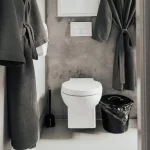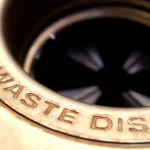Flooding! We’ve all experienced this infuriating spring and summer event. It’s especially common in places like Toronto. Old houses and old buildings often mean springtime flooding, along with post-rainstorm flooding. It can sometimes make you wonder if you need to start gathering two of every type of animal and building an Ark!
In some homes, basements have the ongoing issue of being ‘dark and dank’ and just nasty. You go into them and you feel damp and chilly because moisture is getting in through the walls. It might not be enough to flood, just enough to let you know it’s there. So what do you do about it? You can’t quite start to build an Ark in downtown Toronto, but here are a few basement waterproofing suggestions:
#1: Coating the Walls
This method works well when the amount of water that gets into your basement is minimal. It’s used when the ground around the foundation gets damp enough to be able to leak in without causing a flood but is just coating the walls with moisture. It’s a good idea to get some waterproof emulsion and cover the walls with it, to prevent mildew from developing.
There is a disadvantage to this method, however. Moisture can build up in the soil outside without you realizing it, and it can eventually reach the point where it presses against the walls of the foundation and causes them to bow inwards and inevitably crack. Of course, this might never happen, so you and your plumber will need to make a judgment call based on the condition of your basement and what you can afford.
#2: The Plastic Membrane
No, this isn’t an alien artifact—even though it sounds like it could possibly be. This is actually a frequently-used method of interior and exterior waterproofing. The plastic membrane is typically installed outside the wall surface and surrounding dirt and helps to create a cushion of air between the two. It prevents the soil from ever coming into contact with the walls, and is a great solution for places with limited access to foundation walls, landscaping issues or financial constraints. A disadvantage to this method, however, is that like wall coating, it’s only useful in situations where the risk of a flood is small. It’s best used to keep out the damp, dank feeling basements get.
#3: Weeping Tiles
This is the most costly and complex of these three waterproofing options, but it’s good for serious flooding issues. Weeping tiles work by allowing water to pass through and drain away, but often require the basement floor to be excavated in places. Even then, if there isn’t good existing drainage, the water won’t get through the weeping tiles properly. Instead, it will enter the tiles and go into the surrounding earth and end up causing damage in other places. Another option is to add a catchment pit, set up a sump pump and expel the captured water that way.
There are other ways to deal with basement waterproofing in Toronto, but these are three of the most common. Consult with your plumber, do research online and talk to people who have had similar issues. Be sure to find out the best option that works best for you and your wallet before making any decisions.






